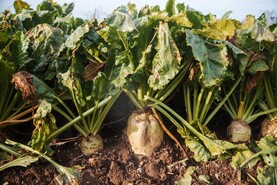Land is wet
You don’t need me to tell you that land is extremely wet at present and there won’t be work done for some time in fields.
Spring planting is now halted thanks to snow last week and heavy rain over the past few days. It will take a long time to dry out land.
Rain is to continue over the weekend and next week looks to be showery throughout, so opportunities to get into fields will be slim.
Records
You can use this time to plan and catch up on paper work. Check that all records are in order and fields which are planted are recorded.
Sowing date and seeding rate, as well as seed dressings should all be noted. Remember that you should also keep labels of seed from different batches of seed. Calculate fertiliser requirements for the coming weeks.
Soil samples
Some farmers may have been waiting on soil test results to come back and should double check that these results match up with fertiliser applications.
There is still a wait on soil sample results in some labs, but this wait is reducing at present.
Once soil samples are returned it might be good to work with your adviser to do a nutrient management plan if you do not have one done yourself. All farms should have a nutrient management plan.
Slurry
If you are purchasing slurry or importing slurry it might be a good idea to take a sample when it is agitated to check the nutrient value of that slurry, but only if it is safe to do so.
Conditions will not be appropriate for slurry spreading for some time yet, but it is still a useful tip to keep in mind.
Forage crops
As weather has turned, many farmers may have a lot of spring sowing ahead. An option to spread out some of this workload could be to grow a forage crop for a livestock farmer.
This crop may also take slurry from the livestock farm. A farmer nearby may like to work with you to grow maize for silage or beet.
Work with someone you trust and agree a payment method. Some money should be given up front to cover sowing costs and work as a deposit.
Cropping under CAP: Under the new CAP there is a requirement that all parcels of land grow at least two different crops in four years. This means if you grow spring barley in a field for three years then in the fourth year you must grow a different crop.
Or, for example, if you grow oilseed rape in a field this year, you can grow winter wheat in that field for the next three years.
This rule comes into effect this year, and while it won’t affect your payments this year it needs to be thought about for the coming years.
The crop diversification requirement (three-crop rule) is still in place under the new CAP, but does not apply for this year.






 This is a subscriber-only article
This is a subscriber-only article









SHARING OPTIONS: